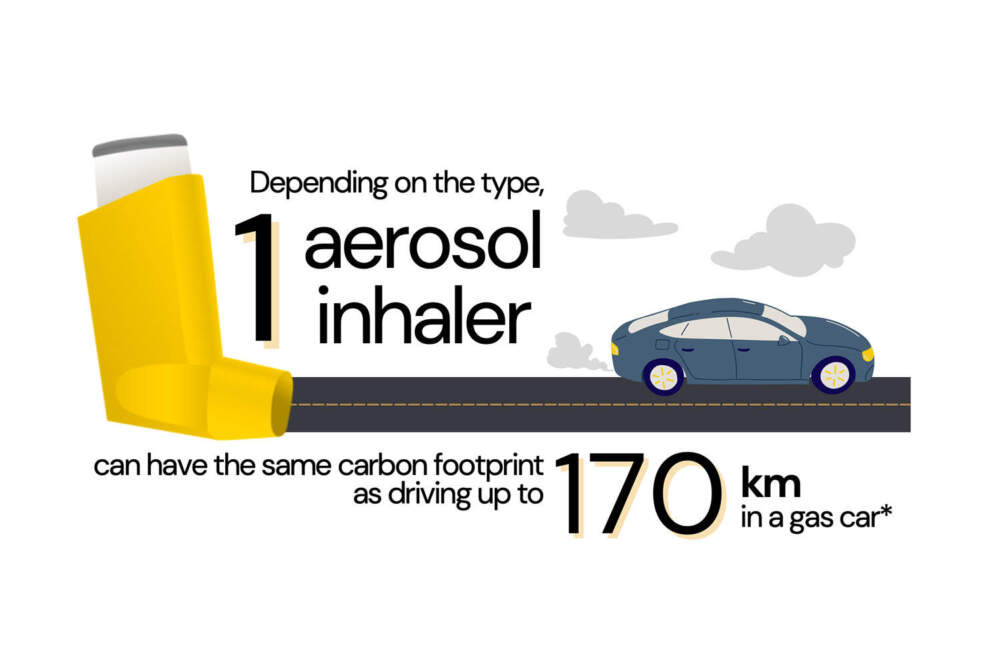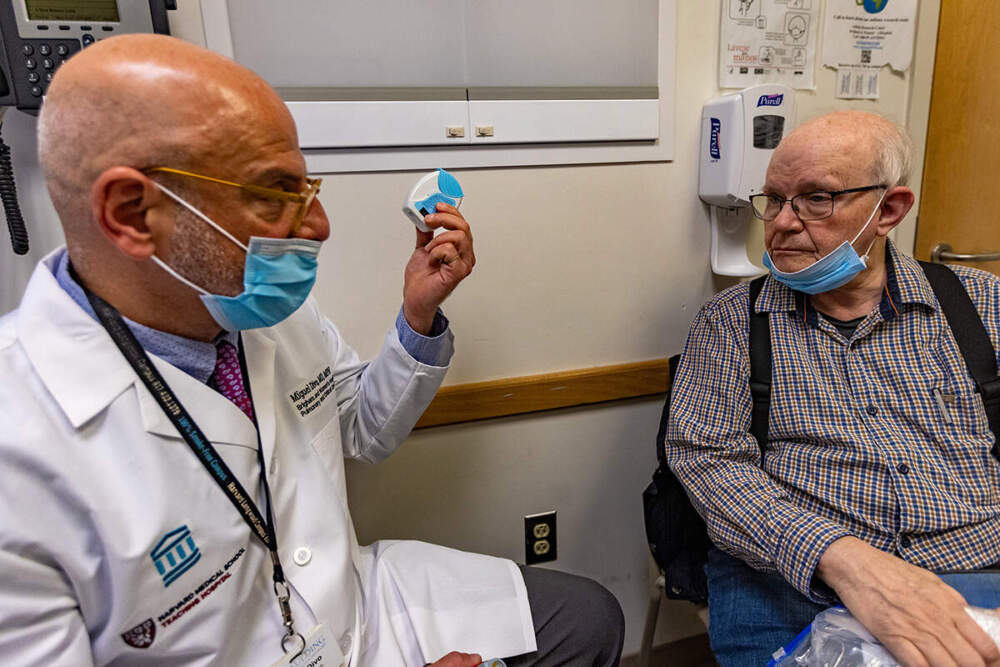Advertisement
Most inhalers in the U.S. emit climate-warming gasses. Here's what you can do
Most people with asthma and other lung diseases have no idea that commonly prescribed inhalers are helping make the planet warmer. Each puff has about the same climate impact as driving a gas-powered car one mile. Patients in the U.S. were prescribed about 144 million inhalers in 2020, roughly the equivalent of driving half a million cars for a year.

It’s an unfortunate cycle. What are known as metered-dose inhalers contribute to global warming, which means more fires, smoke, longer allergy seasons and other problems for people with respiratory problems and — a greater need for inhalers.
There are alternatives. They won’t work for everyone. But if you want to talk to your doctor about switching inhalers, here’s some info to get you started.
What are my options?
The main alternative is called a dry powder inhaler.
It’s about the size and shape of a hockey puck. There’s a small hole at the top. You suck in the medication. Many meds used to treat asthma and other lung diseases are available in these devices.

Another option is a soft mist inhaler. As the name implies, they release a mist containing medications from a mouthpiece on the device. Those are generally more expensive and less available.
Do dry powder inhalers work?
Studies show that patients in the United Kingdom and Sweden who used these inhalers had fewer symptoms of asthma and fewer asthma attacks. But dry powder inhalers are not recommended for young children or older patients with diminished lung power.
Are dry powder inhalers more expensive?
They may be more or less expensive, depending on your insurance. If you don't have insurance, dry powder inhalers may be more expensive, depending on the medication you need and the brand you buy.
How much better are they for the environment?
The carbon footprint of a dry powder inhaler is about 20 times lower than metered-dose inhalers — the boot-shaped puffers that most U.S. patients use. Making the switch has the same or greater impact on your own carbon footprint as planting a tree, vigilant recycling, washing clothes in cold water or adopting a vegetarian diet.
If I don’t like dry powder inhalers or can’t afford them, what can I do?
In short, wait a few years. Inhaler manufacturers have pledged to produce more climate-friendly versions of your metered-dose inhaler. They may not be available for several years and may cost more than the current ones.
In the meantime, anything you can do to avoid asthma triggers will reduce the need for emergency inhalers, which have the highest emissions. But when you need an inhaler, doctors stress, do not hesitate to use whatever inhaler works for you.
